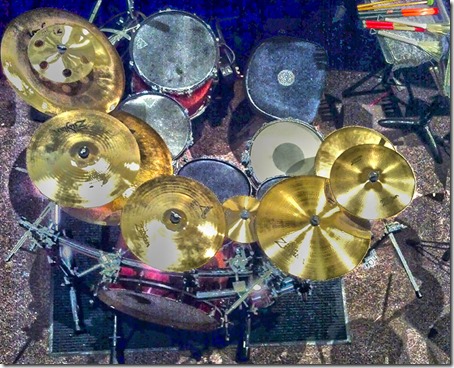January has been a month with not much free time, but for a glimpse of how I’ve been spending what little I’ve had, check out this video below:
Yes, I’ve finally recorded my first drum cover, using #41 by Dave Matthews Band. I’ve been excited to get into doing drum covers and open up a new chapter in my drumming. Not only do I get a chance to apply my drumming towards some fun songs, but also this gives me a chance to learn about recording and video production.
For Christmas my family gifted me with a set of drum mics, along with the stands, mounts and cables necessary for recording. I then got an audio interface (specifically a Tascam US-1800) to connect everything to my laptop via USB. After getting a passable sound, I was eager to set out and record my first song. #41 is one I’ve always enjoyed playing and made a fun one out of the gate. I set up a couple of mixes of the song: one with a click track identified, along with a mix with diminished drums – of which I found out was more difficult to make than thought. It turns out that it’s tough EQ’ing drums out of a mix without making the song sound empty. Ultimately I tried to get the bass drum out of the mix, then diminish the rest. I think the results here were mixed.
I then set out to do some takes. My goal here was to get something out quickly, so I did sacrifice a little bit of quality in terms of my playing and the ultimate mix. If I were recording original music, contributing to a final drum mix, I would have spent a lot more time to do more compression and EQ’ing to get that perfect sound. For the purpose of these the video, I was pretty satisfied with the sound of my drums.
Next up was the video. Using the Nikon D7000 that we bought for Clara last year, I mounted the camera on the tripod and used it as the primary camera. The video quality on the Nikon is pretty impressive, especially when stationary. I then mounted a little web cam on a lamp to capture an overhead angle, outputting the video to another laptop. For my next video, I’m anxious to try some additional angles, as well as a different overhead angle. In this one, I didn’t like how my face was cut off half of the time. I also learned the embarrassing lesson that I need to clean my room before recording again.
This process taught me a lot, and after doing some mental trail-blazing, I’m anxious to give another song a try. I’d definitely welcome any suggestions or feedback.
